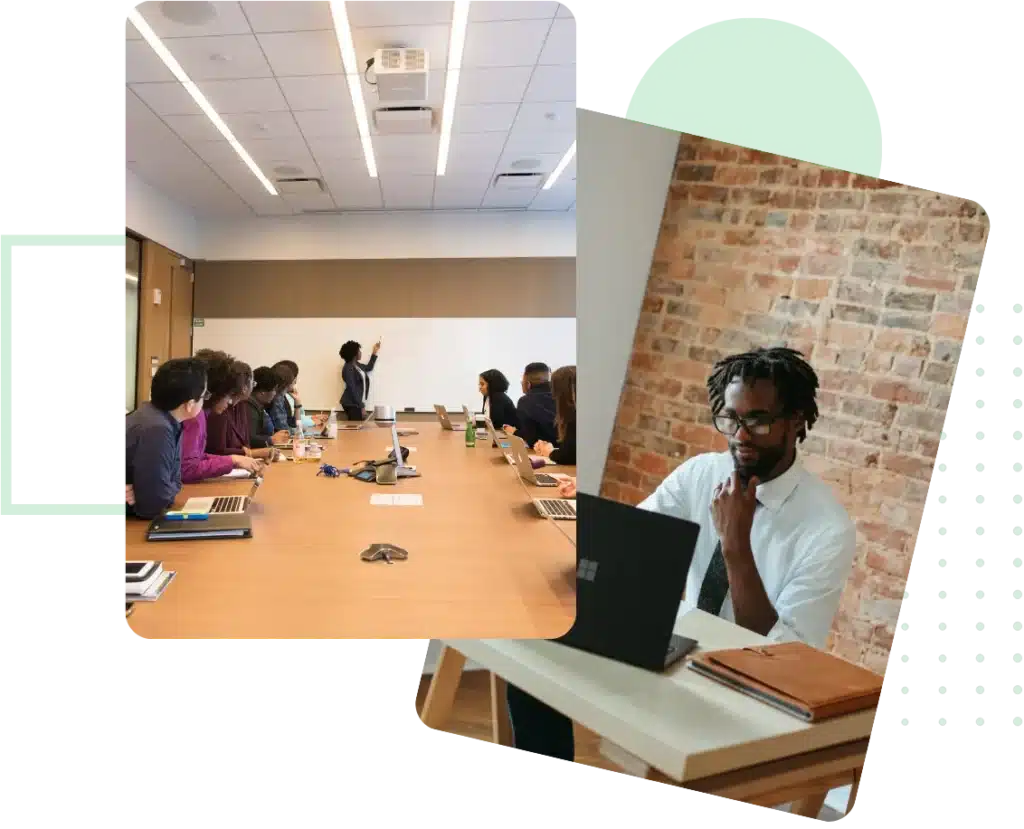Handling difficult situations in
CLIENT RELATIONSHIP
This training will enable you to acquire solid knowledge and skills in managing difficult situations in customer relations in order to approach these situations as a means of enhancing the company's image and finding satisfactory solutions for your client and your company.

DISCOVER OUR TRAINING
Objectives
- Develop your ability to manage your emotions and learn to decline without losing the client.
- Improve the quality of complaint processing and turn it into an opportunity to build customer loyalty
- Know how to manage tense and conflict situations, and develop your emotional control.
Intra
Our in-house sessions allow you to customize the training to your specific context and challenges, with specific anchoring options.
Contact us for a proposal tailored to your needs.

Content
- 5 video sessions of 2 hours or 2 days in person
- 3 hours via e-learning modules before each session
Training access time: The training can start 8 days after the agreement is signed or the OPCO support agreement is received.
Customer reviews*
4.2/5 (2179 reviews)
Success rate*
98%
* These indicators are updated each year using consolidated data from previous years.
Source of indicators: List of trained learners/knowledge validation quiz/training evaluation
Last updated figures: 15/05/2024










Program
Training schedule
The client and their view of situations
- Self-observation form
- Persona sheet
- Analysis of customer satisfaction and gaps
Practical activities:
- Make 2 self-observations on the real situation regarding two of your customers.
- Complete two persona profiles and discuss their characteristics together
- Conduct a customer satisfaction analysis for two client accounts with whom you work regularly.
Handling a complaint - DESC Method
- The consideration pyramid
- DESC Method – Handling Dissatisfaction
- The emotion map
Practical activities:
- Conduct a pyramid of consideration analysis on one of your personas.
- Prepare at least two client sessions using DESC
- Listen to the customers' words in two or three situations to capture the emotions and take them into account.
Dialogue tools for managing situations
- Dialogue Maps
- BACI Framework
Practical activities:
- Listez des exemples de questions ou expressions pour chacune des cartes KESTIO
- Complete the RACI matrix for at least two of your offers
Managing written responses
- Communication styles and written communication
- To do / Not to do
- Email structure framework
Practical activities
- Use assertiveness techniques on 3 "tense" situations you may encounter, and take notes
- Use the response framework for 3 of the most frequently received types of requests
Personality styles and coping with stress
- The DISC personality matrix
- Tony Robbins' triad
After the training
- Knowledge validation questionnaire

Before each session
Participants complete the corresponding e-learning module.

During the session
The trainer facilitates with quizzes, individual or collaborative exercises, challenges, and role-playing.

After each session
Participants complete practical exercises relevant to their own context.
TRAINING MODALITIES
Public
Sales representatives, business developers, technical sales representatives, consultants, sales managers.
All our training courses are accessible to people with disabilities. Contact us for specific support tailored to your needs.
Prerequisites
A positioning questionnaire is sent before the start of the training to assess the level before entering the training.
Evaluation
At the end of the training, participants will receive a questionnaire to validate their learning and establish the extent to which the training objectives have been achieved.
The results of this questionnaire will be provided to the client at the end of the training, during a post-training follow-up meeting (debriefing).
MANY TRAINING COURSES AVAILABLE
Also discover
Training to acquire the keys to successful remote customer communication in order to meet customer requirements.
Training to understand the importance of customer satisfaction, the customer journey, and the elements of a successful customer experience.



